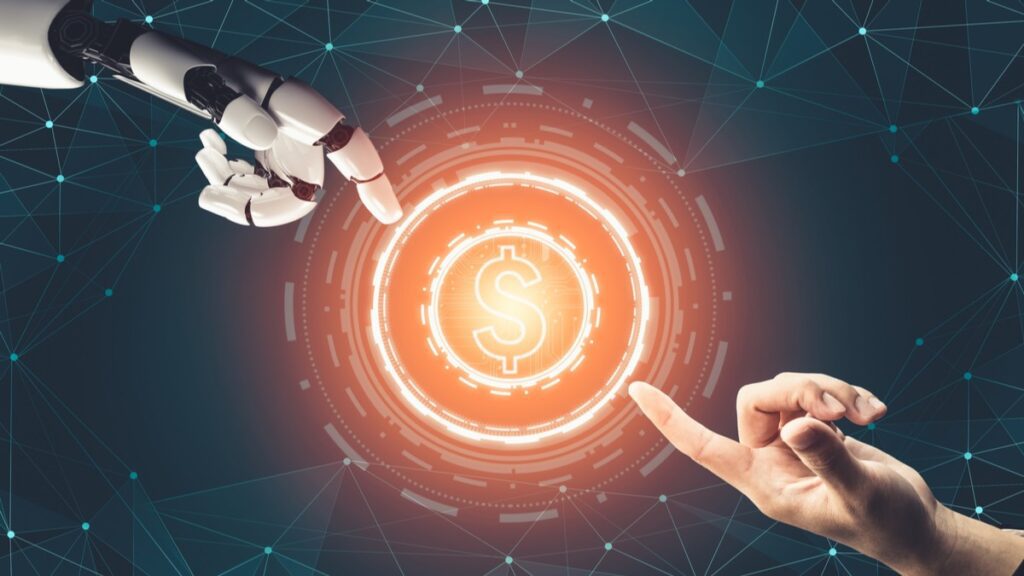
The past decade has brought a much more enabled open space for technological inclusivity and security business networks. The reduced costs for the public to further benefit from the financial sector came, including the banking sector. The incorporation of technology with digital security and financial customization gave birth to what is today known as “financial technology” or as it is main-screamingly referred to as “Fintech.”
If we look deeper into the concept of Fintech we will find that the convergence of Blockchain and Machine Learning holds a much deeper value in shaping the path of global finance and is structuring economies worldwide.
When we talk about Artificial Intelligence (AI) concepts, and more specifically, machine learning, we find a generalized misinterpretation that is relatively associated with the general misconceptualization of AI and how it will bring the world to its knees. Still, in reality, that is not the case. Associating machine learning and AI is not genuinely correct when both technologies are connected. However, in fact, they both remain two distinctive technologies. And it is not a shocker that this extremely broad misconceptualization affects the general perception of the role of machine learning in finance.
But to properly understand the correlation between AI, machine learning, and finance, one must first understand the segregation of machine learning and AI.
Deconstructing Two Concepts
The distinction that lies between AI and machine learning refers to AI’s power – as a machine – to perform knowledgeable tasks; machine learning’s ability lies in automated process machines implemented to distinguish valuable patterns in data.
If machine learning is absent, AI would not exist.
So, what does this truly mean? It means that AI’s existential presence in the technological world solemnly relies on that of machine learning; one cannot exist without the other.
As the implementation of machine learning extends to new highs, so does its integration into complementary innovations as it unravels a much more valuable role, specifically with blockchain technology.
When blockchain is coupled with machine learning, it creates the pillars of digital transformation initiatives, and what says digital transformation more than its inclusion into the financial sector?
The Inclusion of Machine Learning, Blockchain for Finance
As it is known, the blockchain ecosystem refers to a network of participants in a blockchain network with shared business objectives, connections, and processes to efficiently develop and transfer business value.
When infusing this inherently distributed ecosystem with financial services, an unambiguous product is bound to be born, birthing the utmost derivation of technological development.
According to Greenwich Associates, the finance industry is spending as much as $1.7 billion yearly on blockchain technology, with companies making the drastic and hasty shift to welcome machine learning as support for blockchain.
In the kingdom of technological financial inclusion, machine learning and blockchain hold the keys mostly attributed to their security mechanisms. And have no mistake, security is everything when it comes to the financial sector.
The security provided by blockchain can be optimized by machine learning analytical superiority to safeguard and proficiently process immense amounts of data to generate colossal value for both establishments and end-users. And that’s where blockchain’s fundamental role emerges.
Blockchain’s true value lies in its capacity to play the role of an unconfined payment network as a decentralized key, given it enables frictionless payments with low transaction costs. Nevertheless, the fact that blockchain is often adopted as a decentralized solution is accompanied by its own risks; despite its robust application, it also brings forth spun-out security threats jeopardizing its global adoption into the financial sector with centralized banking institutions.
Due to the fact that blockchain transactions only demand a set of public and private keys, this exposes to incidents of theft and fraud. Yet when harnessing the superiority of machine learning capabilities, this sort of notorious activities can be easily detected and, in return, demand human interference.
Machine learning delivers an additional, yet necessary, layer of security to safeguard service providers and their list of clienteles by integrating AI-based biometrics and behavioral analysis to eliminate looming cybersecurity threats.
Quality Machine Design for Financial Purposes
While making the shift to turn the financial sector towards automation is inevitably undeniable, this movement holds immense problems, and risky ones, for that matter, when unmoderated.
In the event of a lack of proper implementation of automated processes, establishments will be faced with the inevitable loss of control over their processes throughout periods of time. This can be easily avoided with the right implementation of built-in checks and balances in a stable financial system.
The unison of blockchain-driven contact and machine learning data ability will only be feasible when accepting the vitality of automatic processes, which in return enables machine learning’s eligibility to look for abnormalities in the system, eliciting human involvement to take the necessary actions. Doing so would create a secure financial ecosystem to make safe, translucent, and efficient financial transactions.